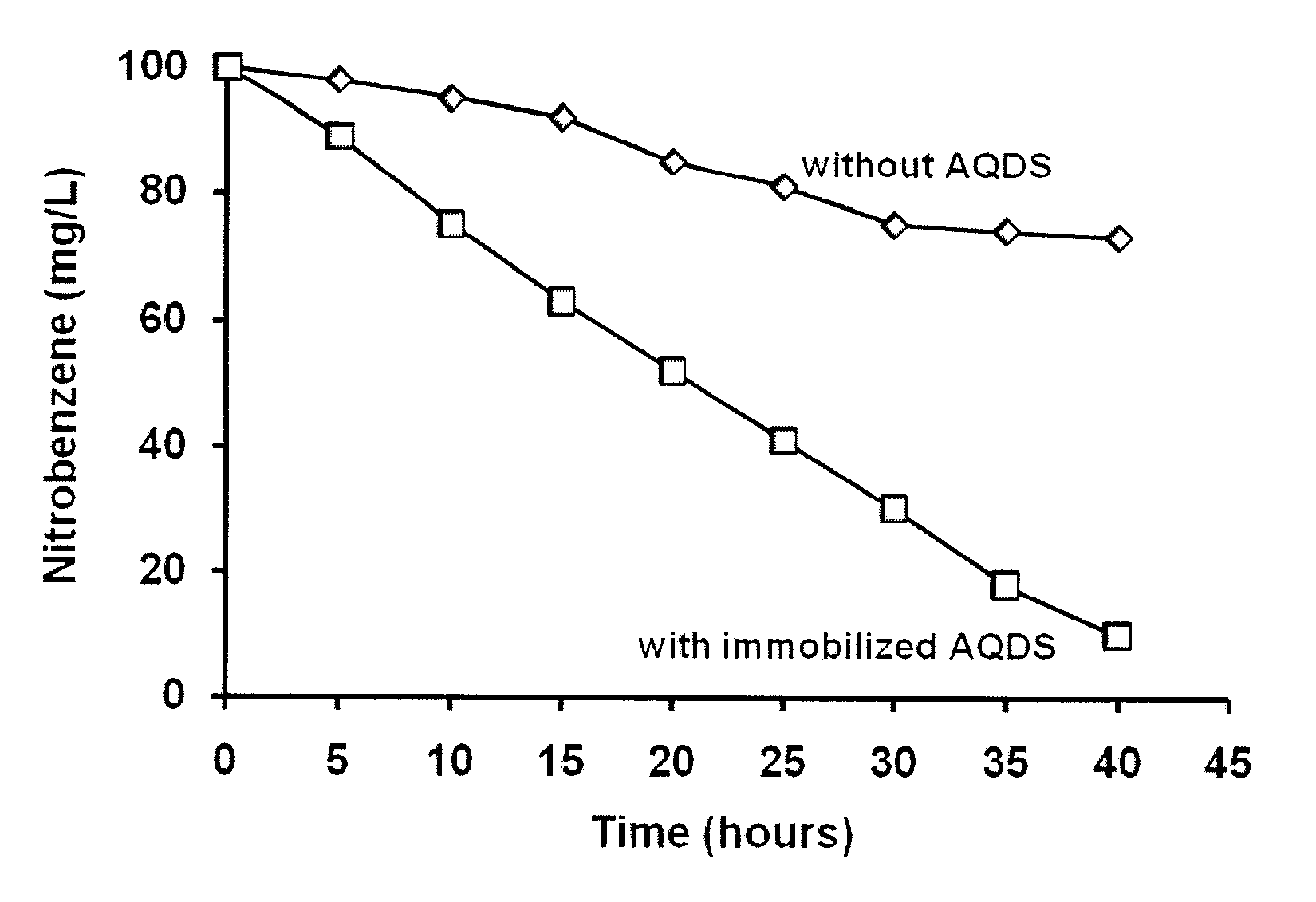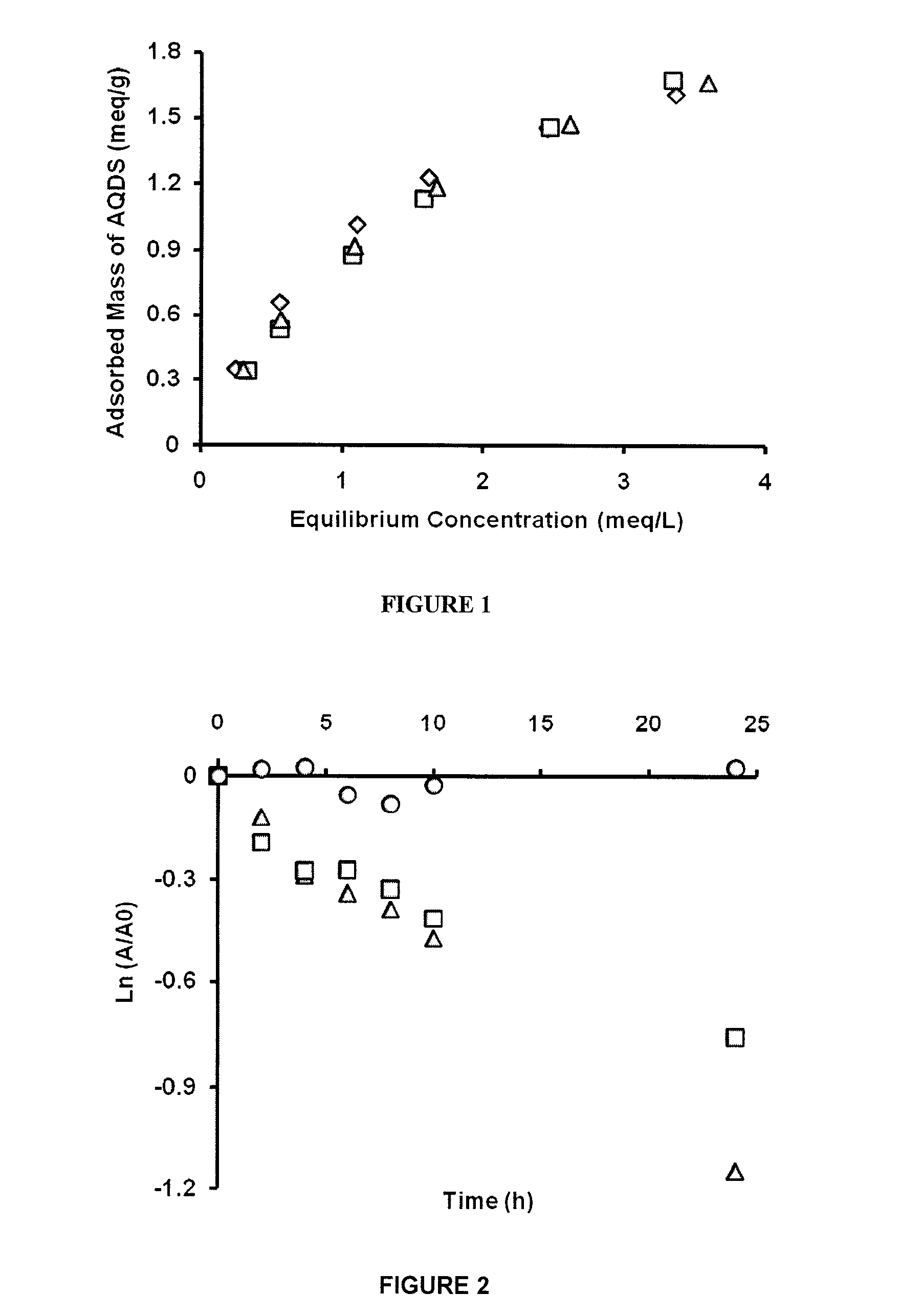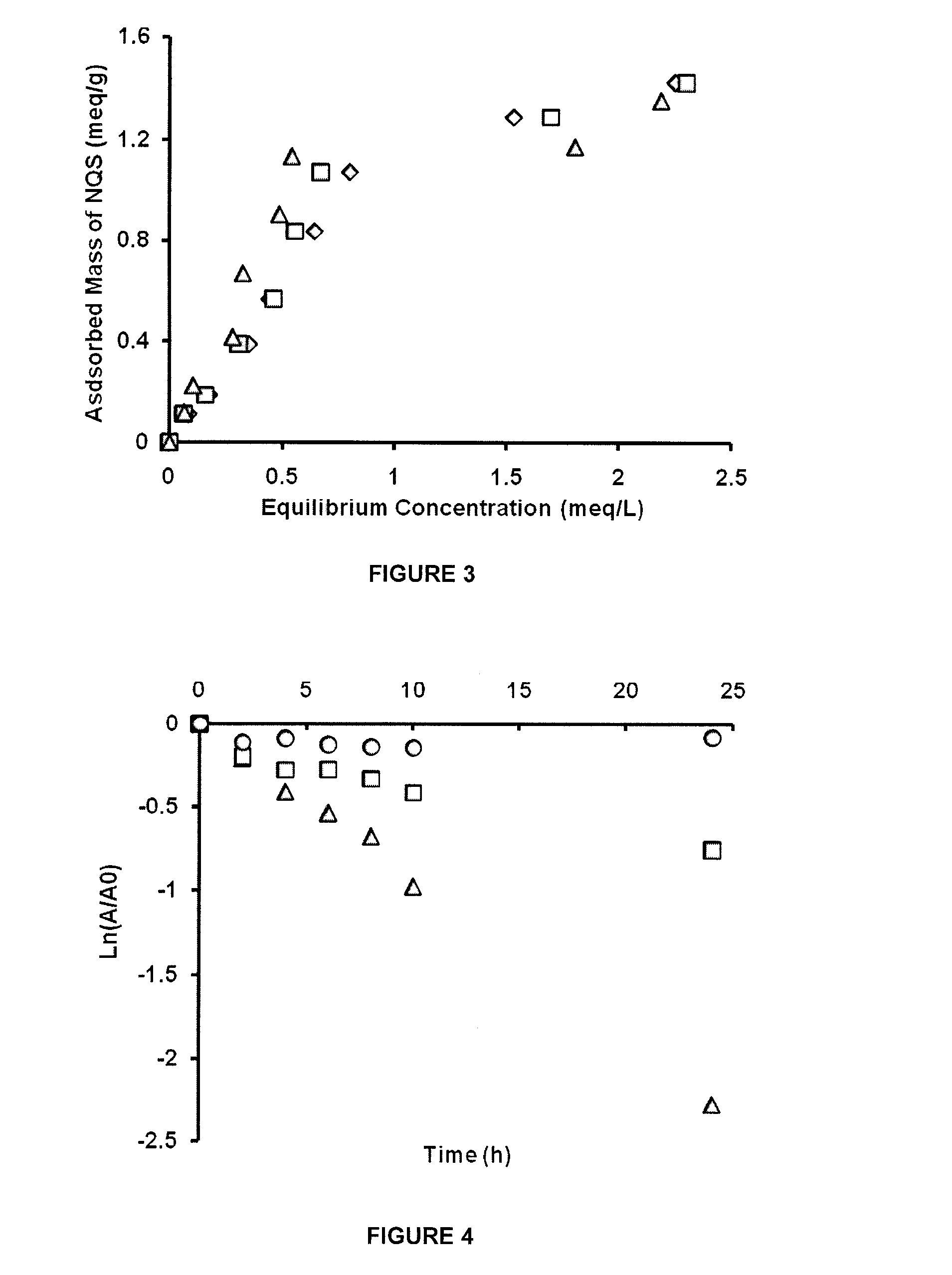Immobilized redox mediators for the treatment of contaminated waters and gas emissions
a technology of immobilized redox mediators and contaminated water, which is applied in water/sludge/sewage treatment, water treatment parameter control, cation exchangers, etc. it can solve the problems of poor performance or even collapse of anaerobic bioreactors, increase treatment costs, and scarce attempts to apply immobilized quinoid redox mediators for the reduction of electron-withdrawing pollutants in anaerobic conditions, etc., to accelerate the rate of azo dy
- Summary
- Abstract
- Description
- Claims
- Application Information
AI Technical Summary
Benefits of technology
Problems solved by technology
Method used
Image
Examples
example 1
[0037]The capacity of an anaerobic granular sludge to reductively decolorize the azo dye, Reactive Red 2 (RR2), was tested in batch incubations in the presence and in the absence of immobilized redox mediators.
[0038]The anaerobic granular sludge was obtained from a full-scale UASB reactor treating an industrial wastewater originated from a brewery. The anaerobic sludge was stabilized in a lab-scale UASB reactor, operated at a hydraulic residence time of 12 h, and fed with a basal medium, which composition is as follows (mg / L): NaHCO3 (2000), NH4Cl (280), K2HPO4 (250), MgSO4·7H2O (100), CaCl2·2H2O (10) and 1 ml / L of trace elements solution. The trace elements solution contained (mg / L): FeCl2·4H2O, (2000); H3BO3, (50); ZnCl2, (50); CuCl2·2H2O, (38); MnCl2·4H2O (500); (NH4)6Mo7O24·4H2O, (50); AlCl3·6H2O, (90); CoCl2·6H2O, (2000); NiCl2·6H2O, (92); Na2SeO·5H2O, (162); EDTA, (1000); and 1 ml / L of HCl (36%). Glucose was used as energy source during the stabilization of the sludge at 1000 ...
example 2
[0050]The following case was carried out under the same experimental conditions described on Example 1, except that the redox mediator immobilized in this case was 1,2-Naphthoquinone-4-sulfonate (NQS). FIG. 3 shows the isotherms of adsorption of NQS on the ion exchange resin described on Example 1. As occurred with AQDS, NQS-saturated resin showed stability within wide ranges of pH (4-10) and temperature (25-55° C.). NQS-saturated resin prevailed unaffected under the same hydraulic conditions described in Example 1 for AQDS-saturated resin. The maximum capacity of NQS adsorption achieved by AMBERJET 4600 CL resin was 1.39 meq / g, which was maintained after at least 5 experimental cycles.
[0051]FIG. 3 shows the isotherms of adsorption of NQS in spherical ion exchange resin at different pH values. ⋄, pH=6; □, pH=7; Δ, pH=8.
[0052]Decolorization assays revealed that immobilized NQS on AMBERJET 4600 CL resin preserved its catalytic properties as evidenced on a 3.3-fold higher decolorizatio...
example 3
[0054]The following case was carried out under the same experimental conditions described on Example 1, except that the azo dye decolorized here was Methyl Orange (MO). FIG. 5 shows the decolorization of MO in the different experimental treatments. It was evident that immobilized AQDS on AMBERJET 4600 CL resin had a catalytic effect on the decolorization of this azo dye. Immobilized AQDS increased 3.4-fold the decolorization rate, compared to the biologically active control lacking AQDS. Meanwhile, no significant (<5%) decolorization of MO occurred in sterile controls. Furthermore, immobilized AQDS no only accelerated the reduction of MO, but also improve its decolorization as MO was totally decolorized after 2 hours of incubation, whereas only 55.5% of MO was decolorized in the absence of AQDS.
PUM
| Property | Measurement | Unit |
|---|---|---|
| temperature | aaaaa | aaaaa |
| temperature | aaaaa | aaaaa |
| temperature | aaaaa | aaaaa |
Abstract
Description
Claims
Application Information
 Login to View More
Login to View More - R&D
- Intellectual Property
- Life Sciences
- Materials
- Tech Scout
- Unparalleled Data Quality
- Higher Quality Content
- 60% Fewer Hallucinations
Browse by: Latest US Patents, China's latest patents, Technical Efficacy Thesaurus, Application Domain, Technology Topic, Popular Technical Reports.
© 2025 PatSnap. All rights reserved.Legal|Privacy policy|Modern Slavery Act Transparency Statement|Sitemap|About US| Contact US: help@patsnap.com



